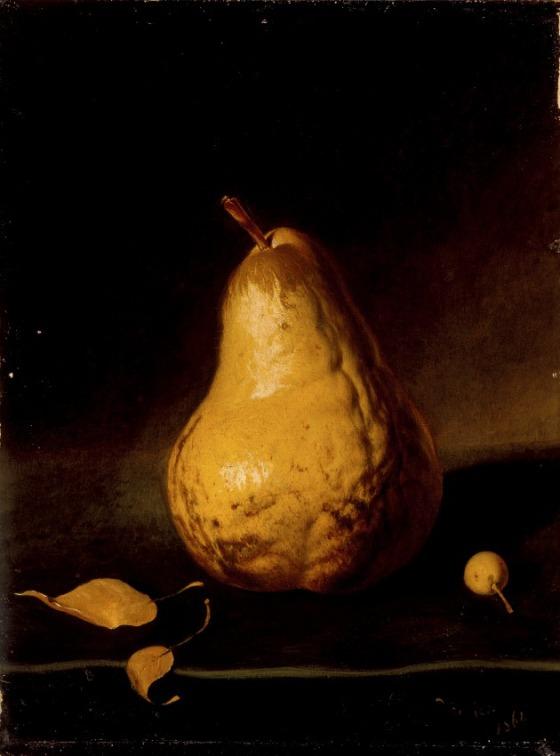Before an artwork can officially enter LACMA’s collection, it must first go through LACMA’s very own “CSI Lab,” a.k.a. the Conservation Center.
Here, conservators thoroughly examine each incoming piece, noting any existing damages or issues. “[It’s] almost like you’re doing a physical on somebody,” explains Mark Gilberg, Suzanne D. Booth and David G. Booth Conservation Center Director, as he mentions the X-rays, photographs, and lengthy discussions involved in a general examination. The whole process is done to get a baseline of how the artwork “looks like and exists” at the moment it comes into LACMA.The results of the “physical” then serve to inform the conservators’ next steps in terms of restoration and display.
The whole process reveals a number of interesting details that would otherwise remain undetected. One memorable discovery Gilberg recalls involves a rather small painting of a very large pear. The piece titled The Great Californian Pear (1864), by Wesley Vernier was featured as part of the EATLACMA exhibition in 2010. The Great California Pear depicts a beautifully painted Duchesse of Anjoulene pear. Vernier’s use of golden, autumnal hues against the dark background create a stark contrast that endow the fruit with a striking presence. On the back of the canvas, an inscription claims that this particular pear weighed a whopping 4 lbs!
When The Great California Pear was taken into the lab for a closer look, something interesting happened:
“As we were looking at the back, out from the back fell a stem. Apparently this particular pear, there was some writing on the back of the canvas, it said: ‘prize winning pear.’ Well, apparently, this was a prize winning pear and that’s why it was portrayed as being so large, and there was the stem of the pear—or what we thought was the stem of the pear stuck in the back of the painting.”
The stem was promptly sent to a botanist for verification. Sadly, the stem did not belong to that particular species of pear—much to the disappointment of Gilberg and the team: “We were pretty excited when it first happened thinking, ‘Wow this is a prize winning pear and they actually kept the stem.’ ”
Be sure to check back here to read more about the projects underway at the Conservation Center.



